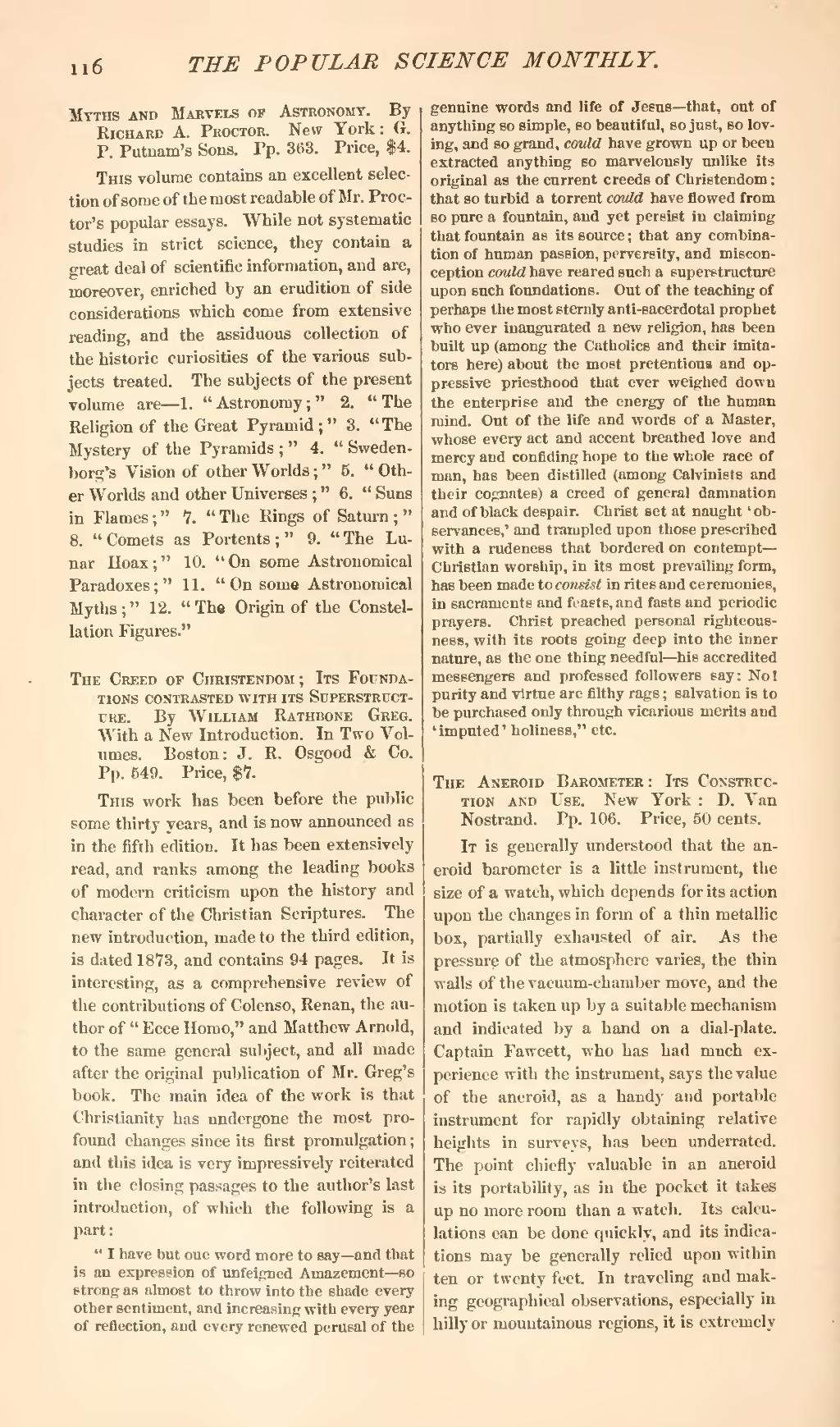Myths and Marvels of Astronomy. By Richard A. Proctor. New York: G. P. Putnam's Sons. Pp. 363. Price, $4.
This volume contains an excellent selection of some of the most readable of Mr. Proctor's popular essays. While not systematic studies in strict science, they contain a great deal of scientific information, and are, moreover, enriched by an erudition of side considerations which come from extensive reading, and the assiduous collection of the historic curiosities of the various subjects treated. The subjects of the present volume are—1. "Astronomy;" 2. "The Religion of the Great Pyramid;" 3. "The Mystery of the Pyramids;" 4. "Swedenborg vs Vision of other Worlds;" 5. "Other Worlds and other Universes;" 6. "Suns in Flames;" 1. "The Rings of Saturn;" 8. "Comets as Portents;" 9. "The Lunar Hoax;" 10. "On some Astronomical Paradoxes;" 11. "On some Astronomical Myths;" 12. "The Origin of the Constellation Figures."
The Creed of Christendom; Its Foundations contrasted with its Superstructure. By William Rathbone Greg. With a New Introduction. In Two Volumes. Boston: J. R. Osgood & Co. Pp. 549. Price, $7.
This work has been before the public some thirty years, and is now announced as in the fifth edition. It has been extensively read, and ranks among the leading books of modern criticism upon the history and character of the Christian Scriptures. The new introduction, made to the third edition, is dated 1873, and contains 94 pages. It is interesting, as a comprehensive review of the contributions of Colenso, Renan, the author of "Ecce Homo," and Matthew Arnold, to the same general subject, and all made after the original publication of Mr. Greg's book. The main idea of the work is that Christianity has undergone the most profound changes since its first promulgation; and this idea is very impressively reiterated in the closing passages to the author's last introduction, of which the following is a part:
The Aneroid Barometer: Its Construction and Use. New York: D. Van Nostrand. Pp. 106. Price, 50 cents.
It is generally understood that the aneroid barometer is a little instrument, the size of a watch, which depends for its action upon the changes in form of a thin metallic box, partially exhausted of air. As the pressure of the atmosphere varies, the thin walls of the vacuum-chamber move, and the motion is taken up by a suitable mechanism and indicated by a hand on a dial-plate. Captain Fawcett, who has had much experience with the instrument, says the value of the aneroid, as a handy and portable instrument for rapidly obtaining relative heights in surveys, has been underrated. The point chiefly valuable in an aneroid is its portability, as in the pocket it takes up no more room than a watch. Its calculations can be done quickly, and its indications may be generally relied upon within ten or twenty feet. In traveling and making geographical observations, especially in hilly or mountainous regions, it is extremely
